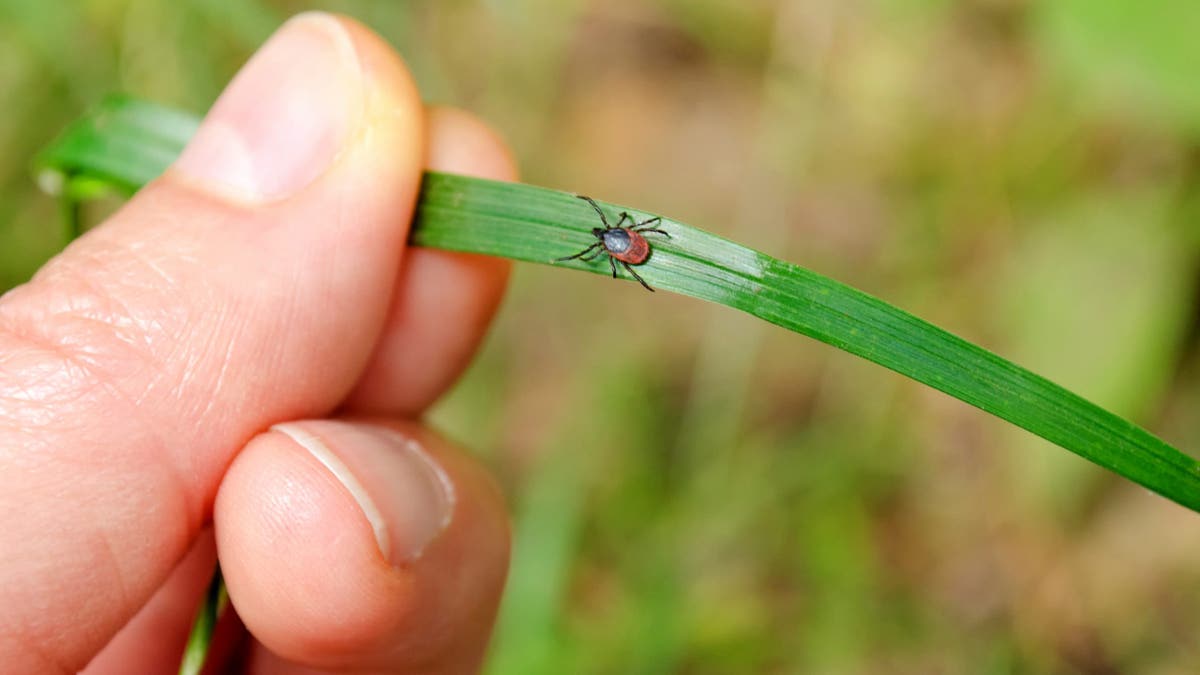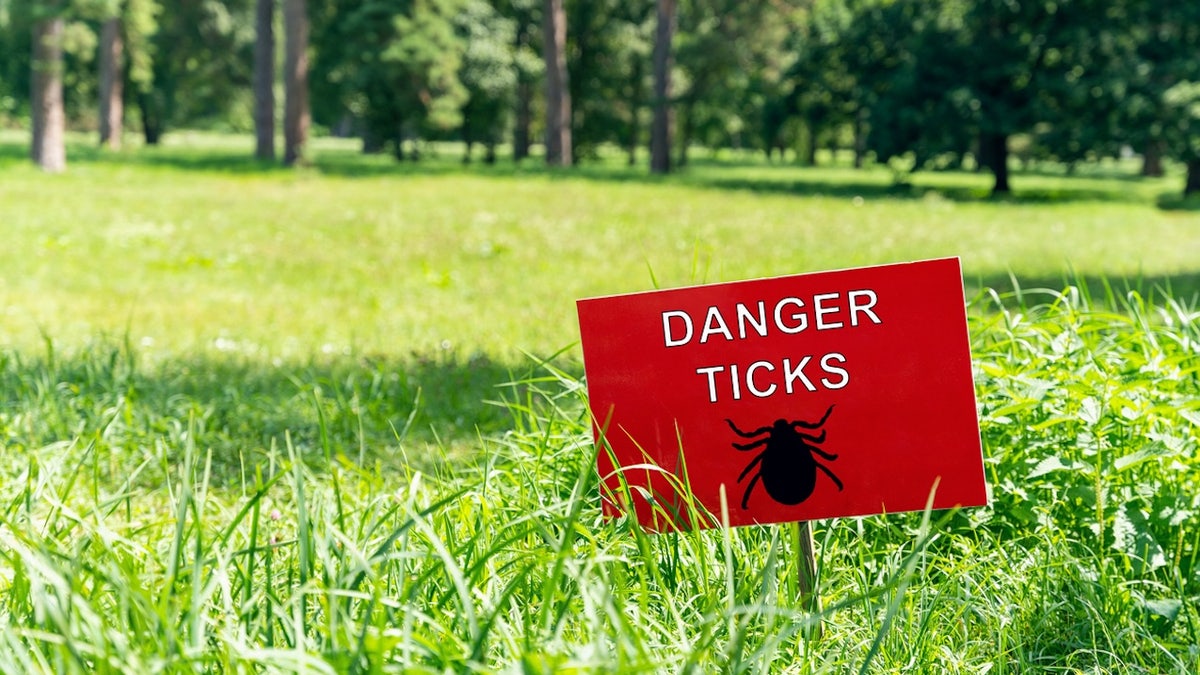NEWYou can now listen to Fox News articles!
Lyme disease is prevalent this time of year, especially in the Northeast, mid-Atlantic and upper-Midwest regions of the U.S. — though there have been reports of cases in expanding areas, according to the Centers for Disease Control and Prevention (CDC).
Borrelia burgdorferi, the bacterial infection that causes Lyme disease, is transmitted to humans through the bite of a black-legged (deer) tick, per the above source.
Deer ticks the size of a poppy seed can inject a numbing chemical when they bite, allowing the infection to go undetected until symptoms begin to show weeks later.
TICKS SPREAD TO NEW REGIONS ACROSS AMERICA, BRINGING DANGEROUS DISEASES AND NEED FOR VIGILANCE
The infection can lead to severe muscle and joint pain, Lyme arthritis, cardiac complications and neurological conditions, experts told Fox News Digital.
How to know if you have Lyme disease
A telltale sign of Lyme disease is a red circular bull’s-eye rash or multiple rashes on the skin, especially in tick-endemic regions.
Between 60% and 80% of patients will develop a rash, according to experts.

Lyme disease is prevalent this time of year, especially in the Northeast, mid-Atlantic and upper-Midwest regions of the U.S. (iStock)
“We’re looking for specific findings, like the classic bull’s-eye rash, a swollen joint or a facial droop called Bell’s palsy, which can be seen with Lyme disease,” Dr. Andrew Handel, a pediatric infectious disease specialist at Stony Brook Children’s Hospital on Long Island, New York, said in an interview with Fox News Digital.
Symptoms typically emerge two weeks after the bite, becoming more severe if they go untreated.
If the infection isn’t treated at the time of the rash, patients will typically seek medical attention for later manifestations of the infection, Handel noted.
Those can include Bell’s palsy (facial nerve paralysis), Lyme meningitis (often marked by severe headache, neck stiffness and fever) and carditis (inflammation of heart tissues).

The infection can lead to severe muscle and joint pain, Lyme arthritis, cardiac complications and neurological conditions, experts told Fox News Digital. (iStock)
One of the earliest signs of Lyme disease is overwhelming fatigue and joint aches, according to Dr. Daniel Cameron, an epidemiologist in Mount Kisco, New York, who specializes in tick-borne illnesses.
Other symptoms may include fever, brain fog, dizziness, palpitations and nerve pain, among others.
Testing, treatment and prevention
A blood test can help diagnose Lyme disease, but timing matters.
“The way we diagnose Lyme disease in the blood is by looking for antibodies, for the immune system’s response to the infection, as opposed to other infectious testing, where you find the bacteria itself,” Handel told Fox News Digital.
TICK BITES AND LYME DISEASE: WHAT TO DO IF A TICK BITES YOU OR YOUR PET
Testing too early can result in a false negative, as antibody tests often don’t turn positive until three or four weeks after the tick bite occurred.
After sustaining a tick bite, experts recommend immediately removing the tick and seeing a healthcare provider.
Doctors will typically prescribe a post-exposure prophylaxis (PEP) with a 200-milligram dose of the antibiotic doxycycline to be taken within 72 hours of a high-risk tick bite, epidemiologists told Fox News Digital.
“It’s the immune system’s lingering response to the infection that you had in the past.”
Although studies have found this dose to be effective in the majority of cases, some physicians prefer a longer course of treatment for tick bites.
“I’m not a big fan of a single dose of doxycycline [200 mg] for a tick bite, even though it’s pretty popular,” Cameron told Fox News Digital. “I don’t feel comfortable with a single dose if I really want to avoid Lyme.”
Instead, Cameron prefers a four-week course of antibiotics for suspected Lyme disease cases. For patients who don’t want to take antibiotics right away, he said he will “watch and wait” to see if symptoms emerge and then treat accordingly.

Borrelia burgdorferi, the bacterial infection that causes Lyme disease, is transmitted to humans through the bite of a black-legged (deer) tick. (iStock)
The doctor recommends that patients follow up in a month to be assessed and undergo screenings for other infections if necessary.
In the event that a patient develops Lyme, the disease typically responds well to a course of antibiotics, which may include doxycycline, amoxicillin or cefuroxime, according to experts.
Treatment duration can vary from 10 days up to four to six weeks.
Chronic Lyme vs. babesiosis
Chronic Lyme disease — also known as post-treatment Lyme disease syndrome (PTLDS) — is a condition that affects a subgroup of patients who were already treated for Lyme disease, but continue to have symptoms.
“The bacteria is dead and gone. It’s the immune system’s lingering response to the infection that you had in the past,” Handel told Fox News Digital.

Later manifestations of Lyme disease can include Bell’s palsy (facial nerve paralysis) and Lyme meningitis (often marked by severe headache, neck stiffness and fever). (iStock)
For these cases, doctors typically prescribe symptom-based therapies rather than additional antibiotics.
More research is needed in the field of PTLDS, experts agree.
CLICK HERE TO GET THE FOX NEWS APP
“It remains an area that requires further understanding and investigation as to how to optimally treat the symptoms that patients have,” Dr. Aaron Glatt, a hospital epidemiologist at Mount Sinai South Nassau on Long Island, New York, and spokesperson for the Infectious Diseases Society of America, said in an interview with Fox News Digital.
“However, the current data do not support providing additional antibiotic therapy for this condition.”

The best way to prevent Lyme disease is to avoid tick bites in the first place, experts agree. (iStock)
If someone suspects they have PTLDS, they should discuss with their physician the possibility of other diseases, such as babesiosis, which is widely regarded as the second-most common tick-borne illness in the Northeastern U.S.
While babesiosis is spread by the same tick as Lyme disease, it is caused by a parasite called Babesia microti rather than a bacterium, per the CDC.
CLICK HERE TO SIGN UP FOR OUR HEALTH NEWSLETTER
“It’s the same tick, but doxycycline doesn’t do a thing for it, whether you take two pills or the full course,” Cameron said. “You’ll never get control of Babesia until you take some anti-parasite medicine.”
If someone does not respond to Lyme treatment, Cameron recommends that they get tested for babesiosis and receive antiparasitic medications if necessary.
Protecting against tick bites
The best way to prevent Lyme disease is to avoid tick bites in the first place, experts agree.

Experts recommend using repellents that contain DEET, a synthetic chemical that has proven effective against ticks. (iStock)
They recommend taking the following preventive measures.
- Perform tick checks in common areas like behind the ears, knees, underarms, scalp, around the waistline, ankles, legs and groin area.
- Shower within two hours of being outdoors.
- Tumble clothes worn outdoors for at least 10 minutes in the dryer on high heat.
- When outdoors, wear long sleeves and pants, with socks tucked into pants.
- Consider wearing clothing that is pre-treated with permethrin, a synthetic chemical that acts as a tick repellent.
- Use tick repellents that contain DEET, another synthetic chemical that has proven effective against ticks.
For more Health articles, visit www.foxnews.com/health
If you do find a tick on your body, Cameron and Handel suggest following the protocol below.
- Using fine-tipped tweezers, remove the tick as close to the skin as possible. Pull upward using steady pressure.
- Avoid squeezing the tick, as this can cause it to regurgitate and expel toxins into the body.
- Do not burn the tick with a match or apply petroleum gel.
- After removal, place the tick in a plastic bag to help your healthcare provider identify it.
- Wash the area of the bite.



